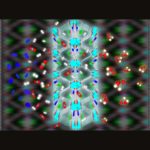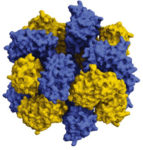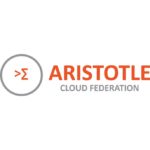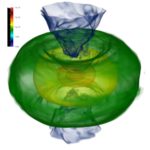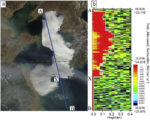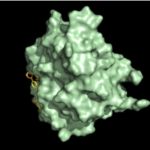Researchers at the University of Pittsburgh are using XSEDE supercomputing resources to develop new materials that can capture carbon dioxide and turn it into a commercially useful substances. With global climate change resulting from increasing levels of carbon dioxide in the Earth’s atmosphere, the work could lead to a lasting impact on our environment. “The basic idea here is that we are looking to improve the overall energetics of CO2 capture and conversion to some useful material, as opposed to putting it in the ground and just storing it someplace,” said Karl Johnson from the University of Pittsburgh. “But capture and conversion are typically different processes.”
Dr Debora Sijacki wins 2019 PRACE Ada Lovelace Award for HPC
Today the European PRACE initiative announced that Dr Debora Sijacki from the University of Cambridge will receive the 2019 PRACE Ada Lovelace Award for HPC for her outstanding contributions to and impact on high performance computing in Europe. As a computational cosmologist she has achieved numerous high-impact results in astrophysics based on numerical simulations on state-of-the-art supercomputers.
Podcast: Supercomputing Synthetic Biomolecules
Researchers are using HPC to design potentially life-saving proteins. In this TACC podcast, host Jorge Salazar discusses this groundbreaking work with the science team. “The scientists say their methods could be applied to useful technologies such as pharmaceutical targeting, artificial energy harvesting, ‘smart’ sensing and building materials, and more.”
XSEDE teams with Aristotle Cloud Federation to implement clouds on U.S. campuses
Two NSF-funded projects have joined forces to help university systems administrators implement cloud computing systems on their campuses. “Combining the consulting strengths of the XSEDE Cyberinfrastructure Resource Integration (CRI) group with Aristotle Cloud Federation project expertise in OpenStack cloud implementation is a win-win for U.S. campus cyberinfrastructure administrators interested in adding clouds to their campus research resources,” said John Towns, principal investigator and project director for XSEDE.”
Supercomputing Neutron Star Structures and Mergers
Over at XSEDE, Kimberly Mann Bruch & Jan Zverina from the San Diego Supercomputer Center write that researchers are using supercomputers to create detailed simulations of neutron star structures and mergers to better understand gravitational waves, which were detected for the first time in 2015. “XSEDE resources significantly accelerated our scientific output,” noted Paschalidis, whose group has been using XSEDE for well over a decade, when they were students or post-doctoral researchers. “If I were to put a number on it, I would say that using XSEDE accelerated our research by a factor of three or more, compared to using local resources alone.”
Supercomputing Sea Fog Development to Prevent Maritime Disasters
Over at the XSEDE blog, Kim Bruch from SDSC writes that an international team of researchers is using supercomputers to shed new light on how and why a particular type of sea fog forms. Through for simulation, they hope to provide more accurate fog predictions that help reduce the number of maritime mishaps. “The researchers have been using the Comet supercomputer based at the San Diego Supercomputer Center (SDSC) at UC San Diego. To-date, the team has used about 2 million core hours.”
XSEDE allocates $7.3M worth of computing time to U.S. Researchers
“XSEDE has awarded 145 deserving research teams at 109 universities and other institutions access to nearly two dozen NSF-funded computational and storage resources, as well as other services unique to XSEDE, such as the Extended Collaborative Support Services (ECSS). Total allocations this cycle, running July 1, 2018, through June 30, 2019, represent an estimated $7.3 million of time on multi-core, many-core, GPU-accelerated, and large-memory computing resources (which does not include additional consulting resources) – all at no cost to the researchers. Since its founding in 2011, XSEDE and XSEDE 2.0 have allocated an estimated $270M of computing time.”
Podcast: Supercomputing New Enzymes for Breaking Down Plastics
In this TACC podcast, Gregg Beckham from NREL and Lee Woodcock from the University of South Florida describe how they are using supercomputers to engineer an enzyme that breaks down plastic. “We used computer simulations to understand how a polymeric ligand like PET would be able to bind to the enzyme,” said study co-author Gregg Beckham, a Senior Research Fellow and Group Leader at the US National Renewable Energy Laboratory (NREL). “We also conducted experimental work to show that indeed, the PETase can break down water or soda bottles, industrially relevant PET films, and another plastic, polyethylene furanoate.”
Supercomputer Simulations help fight Dengue Virus
Researchers are using supercomputers to combat the Dengue virus and related diseases spread by mosquitos. “Advanced software and the rapid calculation speeds of both Comet and Bridges made the current simulations possible. In particular, the graphics processing units (GPUs) on Comet enabled the team to simulate the motion more efficiently than possible if they had used only the central processing units (CPUs) present on most supercomputers.”
Mentorship fosters a Career in STEM
In this special guest feature, Faith Singer-Villalobos from TACC continues her series profiling Careers in STEM. It’s the inspiring story of Je’aime Powell, a TACC System Administrator and XSEDE Extended Collaborative Support Services Consultant. “Options, goals, and hope are what can set you on a path that can change your life,” Powell said.

